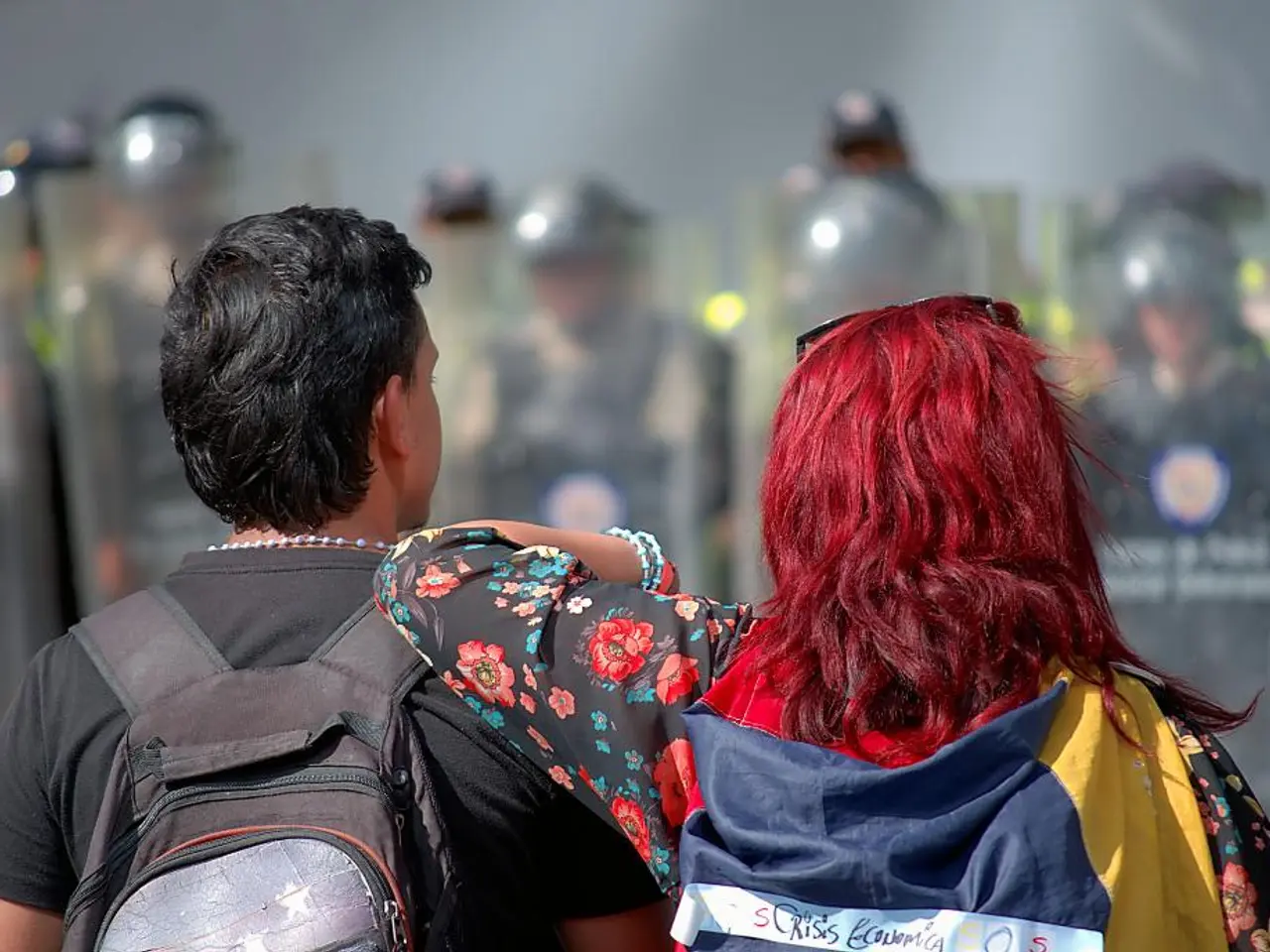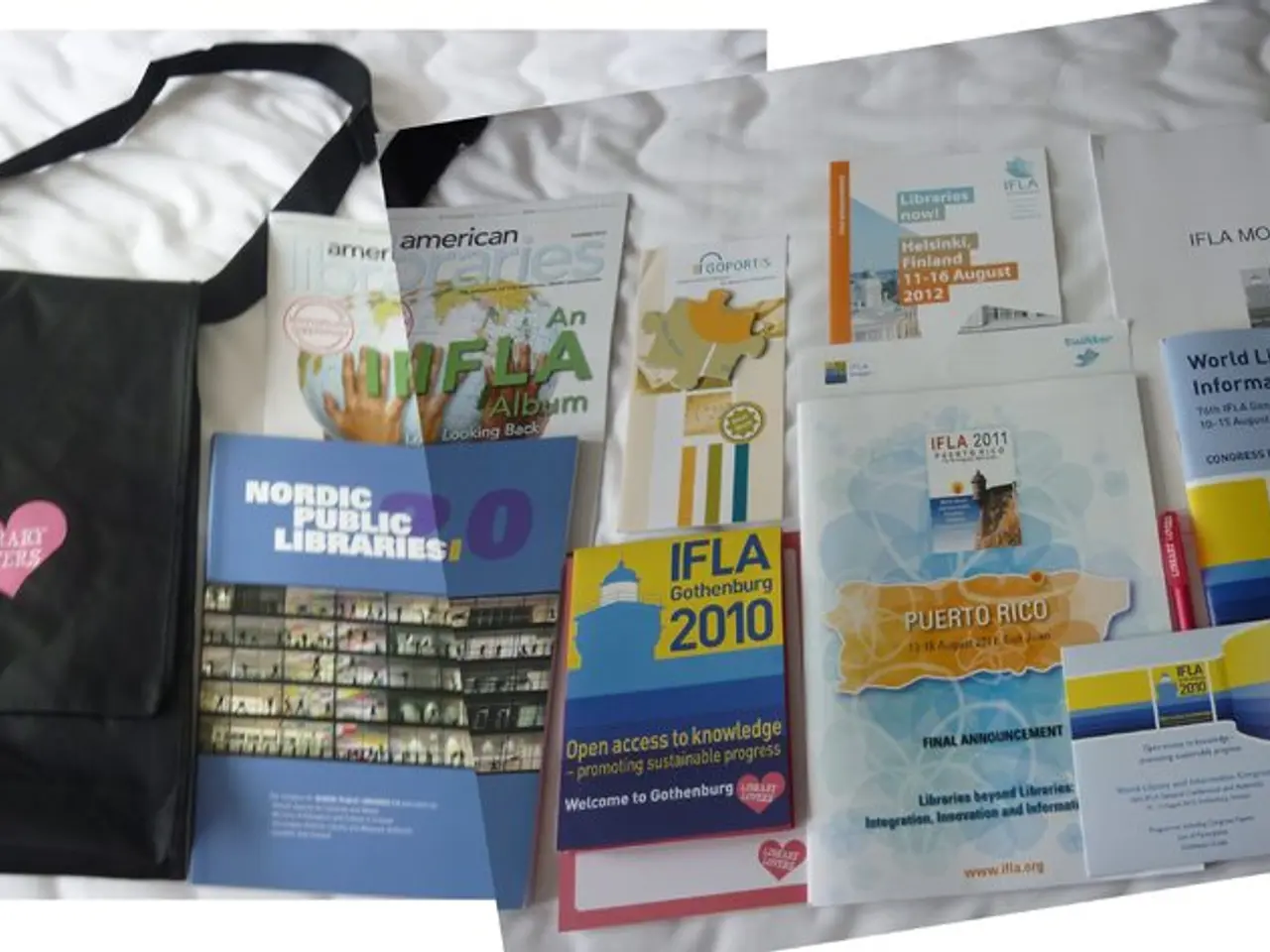Ukraine Conflict Dialogue: Trump's Representative Engages in Discussion with Putin in Russia
In a significant escalation of the ongoing conflict in Ukraine, the United States has announced plans to impose secondary tariffs on countries that continue to import Russian crude oil and related products. This move is aimed at putting economic pressure on Russia and the countries trading with it, in an attempt to coerce them into reducing or stopping imports from Russia.
The Trump Administration recently issued an Executive Order on August 6, 2025, imposing a 25% ad valorem duty on imports from countries like India, with an additional 25% tariff scheduled later, summing to 50% on imports from India in this case. The sanctions framework allows the Secretary of Commerce, in coordination with the Secretaries of State and Treasury, to determine which countries meet the threshold of direct or indirect Russian oil imports. Following that, the State Department recommends imposing secondary tariffs on those countries.
These secondary tariffs would extend to oil, gas, petroleum products, and uranium imported from Russia. The proposed sanctions reflect bipartisan legislative support pending in Congress and aim to coerce countries like India and China—the largest purchasers of Russian crude—to stop or reduce imports from Russia.
The tariffs serve both as a punitive economic measure and a deterrent, intended to force third-party countries to choose between continuing lucrative trade with Russia or facing steep tariffs on their exports to the U.S. Some countries might seek alternative suppliers to avoid sanctions, but clandestine trading is difficult given the large oil volumes involved.
Beyond oil, the sanctions announcements have included threats to extend measures to countries supplying Russia with armaments to Ukraine, accompanied by renewed U.S. arms supplies to Ukraine as part of a combined diplomatic and economic strategy.
The measures are framed as a last resort, with previous attempts by the administration focused on diplomatic efforts to broker a ceasefire in Ukraine. The administration set deadlines (initially 50 days, later shortened to about 10-12 days) for Russia to reach a peace deal to avoid these consequences.
In related news, Ukrainian President Volodymyr Zelensky urged the strengthening of sanctions and military cooperation against Russia by phone with Donald Trump. The Netherlands announced a donation of 500 million euros as part of this initiative, dubbed "Purl" ("Ukraine's prioritized needs list"). Swedish Defense Minister Pal Jonson emphasized that Ukraine is not only fighting for its own security but also for theirs.
The Kremlin denounced "illegitimate threats" in response to Donald Trump's comments. Russia, however, has "sent certain signals" on the Ukrainian conflict, according to Yuri Ushakov, Putin's diplomatic advisor. The meeting between Putin and Steve Witkoff, Donald Trump's emissary, at the Kremlin on August 6, lasted nearly three hours. Donald Trump described the meeting as "very productive" and claimed "great progress" was made.
Sweden, Denmark, and Norway announced their intention to purchase weapons from American reserves to strengthen Ukraine's defenses, worth a total of $500 million. Donald Trump also announced a project in collaboration with NATO chief Mark Rutte for European Allies and Canada to buy American weapons to send to Ukraine.
The conflict in Ukraine has resulted in casualties, with Russian drone strikes injuring three people in the Zaporizhzhia region and two in Kherson, according to regional military authorities.
The U.S. strategy of imposing secondary tariffs on countries trading with Russia marks a significant escalation in U.S. policy after a period of relative restraint. This approach can impose up to 50% combined tariffs on imports from countries like India continuing to trade with Russia.
The United States' imposition of secondary tariffs on countries trading with Russia, as part of its U.S. strategy, serves a dual purpose: a punitive economic measure and a deterrent, aiming to force third parties to reconsider trade relations with Russia and instead face steep tariffs on their exports to the U.S.
The proposed sanctions by the Trump Administration extend beyond oil products, potentially affecting those countries supplying armaments to Ukraine, as a part of the combined diplomatic and economic strategy aimed at coercing countries like India and China.







